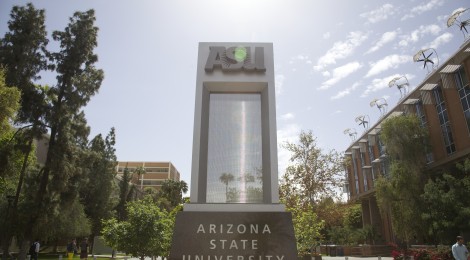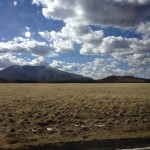
Arizona State University Part 1- where the sun shines
Sustainable Solutions Initiatives
I could sense a heightened feeling of excitement and curiosity amongst the group as ‘Saguaro’, our trusty van, pulled into the parking garage of Arizona State University (ASU) in Tempe, Arizona. This university is home to about 80,000 students. Michael Crow, the universities’ current president, has made a clear and conscious effort, despite the size of the university, to make ASU a leader in domestic and global sustainability efforts. ASU has over 500 classes that address sustainability, and within these classes, students focus on finding solutions to the environmental challenges that are posed in our society today.
ASU houses the Rob and Melani Walton Sustainability Solutions Initiatives. Within this department The Sustainability Solutions Services (S3), directed by Dan O’Neill, has emerged as a service that, “Utilizes expert teams to collaborate with clients on real, practical, and effective sustainability solutions.” S3 is a fee-for-service consulting firm within the university that works hands-on with each client’s sustainability challenges. A few of these challenges are as follows: greenhouse gas emissions, transportation and logistics, supply chain, water use, and waste management.
The Eco-E Path mosaic group had the pleasure to meet and interview Dan O’Neill, the director of S3 on the morning of March 11, 2014. O’Neill, a native of Arizona, has the privilege to collaborate with students and faculty on the research and work that S3 completes. This consulting firm has been successful in engaging clients who are truly interested and passionate in sustainability efforts, especially those who like the idea of working in conjunction with a large university. The clients who work with S3 are able to experi

ence the dedication and responsibility that one university has to sustainability efforts, which helps to put ASU on the map as a sustainable leader. However, not every program is perfect. O’Neill reflected on the fact that the sheer size of the university itself poses challenges. Also, in regard to workforce recruitment, many faculties on tenure track (who are major contributors to this program) do not wish to participate. There are many external factors such as their reputation and academic reviews, which cause a hesitation among some faculty. O’Neill challenges the faculty to think about what impact they want to have in such an important resource to the university. In regard to the student body, students are able to engage in research and real world applications of the material that is taught in the classroom, which does act as a resume builder, but ultimately provides students with a vital experiential learning component. Marketing to students and faculty is key to the program’s success. Once a project is completed, the work is publically published so that faculty, students, and potential clients have the opportunity to see how S3 operates.
The Sustainability Solutions Services is a great model of experiential learning for our curriculum. Our Mosaic group feels that an experiential learning component is crucial to our curriculum, since entrepreneurship revolves around identifying a problem and actively searching for a solution. Growing up, I’ve always been told that practice is key to success and without it your feet won’t leave the ground. The students engaged in the S3 program, actively work with real world clients to address their sustainability needs. The future students of our curriculum will be successful if they practice what they learn inside of the classroom. Furthermore, we have identified that faculty support for this curriculum is key. O’Neill challenges the ASU faculty to think of what impact they would like to have in the program, for their clients, and for the environment as a whole. Since Dickinson is a liberal arts school and in order to stay within the college’s academic goals, our curriculum must be downscaled and interdisciplinary. However, this leaves so much room for involvement of students from every major and high scale creativity. The faculty of Dickinson College already supports their students in a very personalized way, but the faculty will have to go one step further with this curriculum to challenge students to identify a sustainable problem within their passion and to develop a creative solution. The faculty at Dickinson College like the faculty at ASU must be challenged to think of what impact they would like to have in this curriculum, and ultimately their students’ futures.